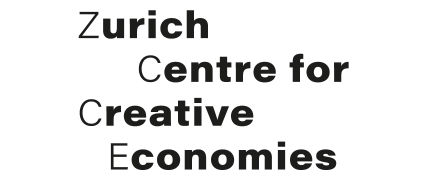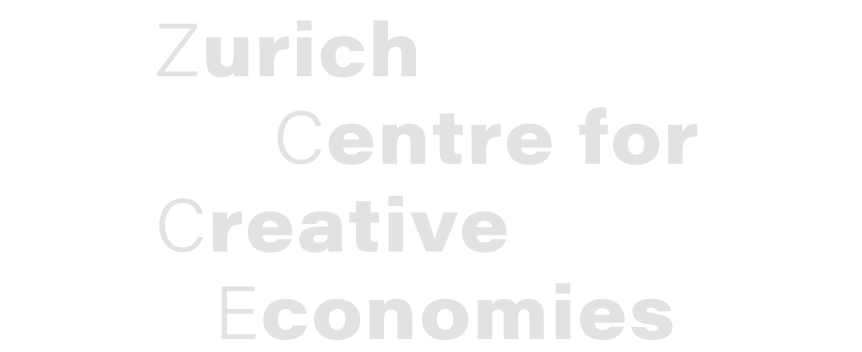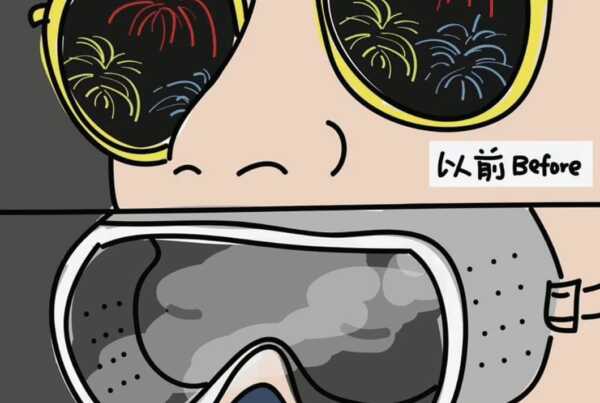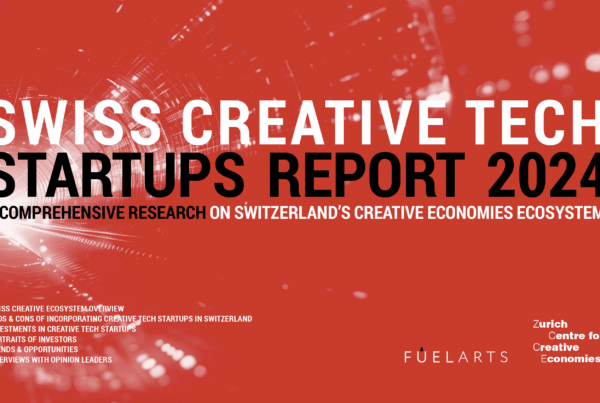Curating Capitalism: How Art Impacts Business, Management, and Economy
by Pierre Guillet de Monthoux
Sternberg Press (Serie : Experiments in Art and Capitalism)
A review by Luca Danieli
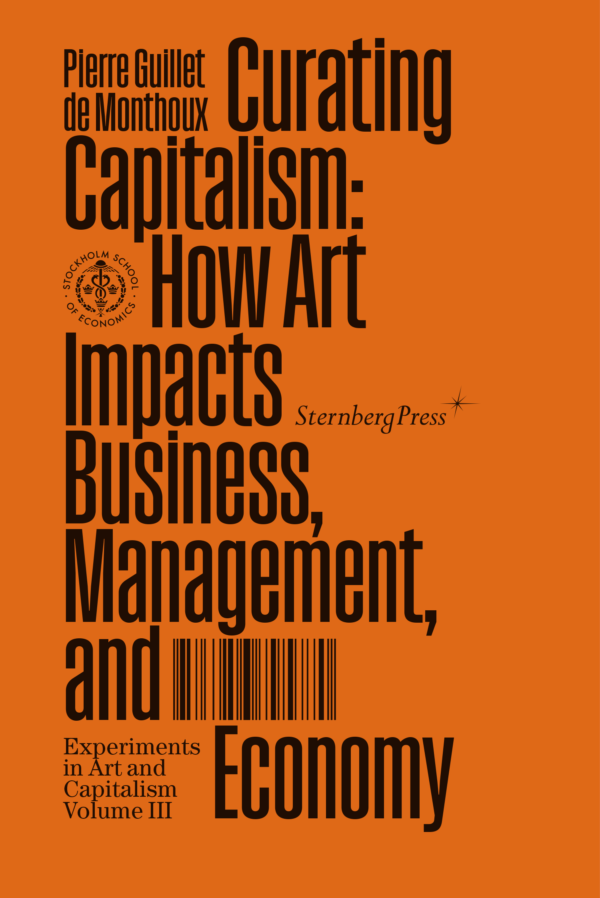
What is the role of the artist in shaping the knowledge of the future? What’s the role of the curator? And how can these figures impact the economy and set the agenda in the age of social and environmental sustainability? These are some of the questions that Pierre Guillet de Monthoux tries to address in his new book Curating Capitalism: How Art Impacts Business, Management, and Economy, published by Sternberg Press (London, in the series Experiments in Art and Capitalism).
Guillet de Monthoux has been described as “management philosopher, art theorist, [and] performer” by Alladi Venkatesh[1]. He is actually the scientific director of the Stockholm School of Economics (SSE) Art Initiative where he is Professor at its Center for Arts, Business, and Culture. The series aims at documenting the results of the experiments conducted by the SSE Art Initiative about the interrelations between the arts and capitalism[2].
Guillet de Monthoux writes something that is more than a book about management, and dives deeply into philosophical, aesthetic, and ethical questions about the role of art in the cultural economy. The book is structured in nine chapters, each focused on a different sector of the economic society, which include: knowledge, ethics, collectors, flux, middle class, luxury, prices, poetics, and business education. These chapters are preceded by a Prolegomena, which contributes to set the fundamental concepts that will frame the tone of the discussion.
“How can artists and curators impact the economy from the inside?” (p.10) This question is being addressed by the author through a very “concrete” narrative and down-to-earth language. Each chapter focuses on a specific curator and his or her approach to art and entrepreneurship. However, the book should be really called “Curating Relationships”, because Guillet de Monthoux seems to use the arts and the economy to suggest a new model for human cooperation. The book may also be called “Curating Personality”, because it can really work well as a manual for self-improvement. Each chapter, indeed, tries to highlight a virtuous characteristic that the author probably considers fit for a fairer and more sustainable economy: concreteness, humbleness, genuineness, flexibility, authenticity, down-to-earth(ness), ability to cooperate, ability to inspire, focusing on our own qualities rather than our own flaws.
Curating relationship
So, why is the book called “Curating Capitalism”? Does capitalism need to be curated? And what function has art in this process, if any at all? These questions are set up in the Prolegomena, which clarifies how the term “Curating Capitalism” is not used as a catching term or as a metaphor, but is a self-standing concept conceived in response to Gernot Böhme[3]. Grounding much of the discourse on personal memories, Guillet de Monthoux highlights a focus by Böhme around the concept of “atmosphere”, suggesting that the new economy driven by the advent of Information Technology (and, by extension, of the Internet) resulted into a shift of the capital asset from manufacturing to the creation and control of “aesthetically pleasing moods [where] this paid work to curate atmospheres […] has replaced factory work in the aesthetic economy.” (p.17). The concept of “pleasing moods” is of particular interest here, as it expands the capitalistic notion of brand curation towards an artistic dimension formed of “architects, city planners, scenographers, and light and sound technicians” (p.17), who became an important societal value driving economic growth. It does not take long to recontextualize this shift so as to account for the modern times: “when the economy becomes aesthetic, those now engaged in ‘curating capitalism’ typically also engage in ethics” (p.24). In the Anthropocene epoch, sustainability is not just an abstract value leading philosophical questions about our social and environmental relations, but is becoming a concrete capital asset driving the market. Therefore knowledge, ethics, and the arts have real entrepreneurial potential in setting up new economic paradigms and disrupting market relations.
Curating Knowledge (Concreteness)
It is therefore not a surprise that Guillet de Monthoux chooses to start investigating the topic of knowledge as an important sector to accelerate change. And he does it in a very concrete way, focusing the first chapter around the approach of Swiss curator Hans Ulrich Obrist, described as the “first truly independent curator entrepreneur” (p.29). Obrist’s practice highlighted “how curating creates knowledge” (p.30), interpreted in the book mainly from the perspective of art-science. This tendency brought Obrist to engage in deep conversations with the social scientist and philosopher Bruno Latour, whose theories will inform the rest of the chapter. Guillet de Monthoux compares the curatorial approaches of Latour and French philosopher Jean-François Lyotard. On the one hand, the author reports that for Latour “art is needed for a return to the concrete” (p.36); on the other hand, Guillet de Monthoux counterposes this philosophical approach to the immateriality of new information technologies, by reflecting on Lyotard’s exhibition “Les immmatériaux” (1985) which represented the “smooth dissolution of matter into the global DNA of information” (p.36). In a way, what the author seems to suggest is that there is not just one knowledge, but that there exist multiple knowledge(s), and as such they present potential for curatorship and liberalization. Approaching the topic from the point of view of cultural economy, these positions on concreteness and knowledge seem to suggest a vision oriented towards the creation of small well-positioned centers for cultural sharing with well-defined target audiences. In a globalized world that favors the creation of festivals and large events for cutting management costs (see, for example, the paragraph “Gaia, not globe”), the author tries to inform us by use of philosophical references about the contemporary concerns on the disappearance of small local centers for experimental culture (see, for example, Creative Europe’s 2019 call “Co-operation of Small Music Venues”). Guillet de Monthoux, however, does not fail to warn us that such a hoped return to “the local ” (p.42) may at times degenerate into museal nationalism. Finally, through the words of Latour, Guillet de Monthoux does not fail to also land some critiques to some economists and the abstraction of some economic principles: “What makes ‘the economy’ harmful is that its philosophy is ‘not based on reality’” (p.54). Here, we may question how many people and culture may benefit today and in the future from the hype of virtual reality and streaming platforms, with Avatars becoming the new drug of the twentieth century, and how knowledge is transforming in relation to fake news that capitalize on this disconnection from “the concrete”, and how isolation (for example, experiencing the world from inside a house) is linked with aggressive behavior.
Curating Ethics (Humbleness)
The author observes in the Prolegomena that “when the economy becomes aesthetic, those now engaged in ‘curating capitalism’ typically also engage in ethics” (p.24). The second chapter deals with the question “Can the experience of a work of art have an impact outside museum walls?” (p. 69). The question is debated through a short but interesting review of aesthetic theories by Jacques Rancière, Nicolas Bourriaud, and Immanuel Kant. The main point raised suggests that art, as a subliminal experience, is unable to convey concepts directly to the end user, and therefore art is unable to persuade people into enacting a virtuous change by itself. However, art as a representative of a certain social organization conveys certain principles by means of aesthetic experiences, and ethics eventually “radiates out of the atmosphere, what Rancière terms ‘the aesthetic regime’ that curating might evoke” (p. 69). It is unclear how much the author agrees with this philosophical position, which is in the book used to contextualize an example taken from the 2017 Palme d’Or movie The Square by Ruben Östlund, in which a curator presents an artistic installation conceived with the specific purpose of sharing a feeling of connection among people and morally improving society. This example sets the tone and discussions in the following paragraphs. Guillet de Monthoux uses The Square to highlight two types of curation: one called “cultural curating” and the other called “aesthetic curating”. In the author’s vision, the former is a type of faked curation explicitly using the new culture associated with the Anthropocene concept for establishing dangerous power relations; the latter is what Rancière hoped for. In a way, Guillet de Monthoux exploits the story presented in the movie The Square as a mechanism to suggest us that the Anthropocene has to elaborate new well-defined aesthetic criteria in order to be truly effective, rather than borrowing principles from other aesthetic currents and surrounding them with a “do-good approach”.
Curating Collectors (Genuineness) & Curating Flux (Flexibility)
In the chapters Curating Collectors and Curating Flux, we go into the concrete of the art business, by adventuring both in the organization of 2009 Venice Biennale and in the activities of Swiss Flux Laboratory founded by Cynthia Odier. The former chapter aims to show the richness in economic relationships that a museum or art exhibition can generate, by presenting the efforts of Daniel Birnbaum and Maria Finders in curating the Venice Biennale. Together with highlighting the economic potential of any cultural center to become self-sustainable as a source for sponsorship or other services, fundraising is the gravitational topic in a roller coaster that questions how much art should be dependent on economic interests. On the one hand, Guillet de Monthoux presents a search for sponsors and external support that almost resembles the dynamics of conning people. On the other hand, the author presents the unfruitful results of Roger Buergel’s anti-capitalistic ideological positions in securing support from Burda Magazine for the realization of 2007 Documenta 12. In the middle stands Maria Finders, who tries to find balance between the need to collect the necessary resources to deliver a great exhibition and her strive to keep artistic expression independent and free. In the end, through the figure of Finders, the author questions the morality of economic dependence, suggesting that efforts should be done by curators in being ethical when developing a network of trustworthy arts lovers, and the involved people should stay humble even in top positions, since “Curating collectors is, of course, about friendship, personality, and flair” (p.108).
The following chapter focuses on one of Finders’ friends: Cynthia Odier, curator of the Flux Laboratory and founder of the Fluxem Foundation. The chapter moves from relationships with the outer world to organizational relationships, and dives into the topic of flexibility as a paradigm for the generation of meaningful art. In a way, and in accordance with the observations done for the chapter on Curating Knowledge (see above), Guillet de Monthoux suggests that meaningful disruptive exhibitions are often achieved in small spaces, where budgeting is actually a problem that forces curators in rethinking experience. The author reports an episode narrated by Obrist, who had to host an exhibition in his kitchen at the beginning of his career, and “developed into a kind of rumor. Often, people do not remember about my biennales, which have been mediated by twenty press officers and five hundred articles. But the kitchen show, they know of” (p.125). Odier dances in this scenario: married to a healthy private-bank manager, Odier seeks to have choreography and art to break free from the rigid predetermined structures characterizing the Swiss bureaucratic environment by providing artists with freedom to experiment. It is not just a flexibility of organization, but a flexibility of the mind to generate innovation: the author adds what may appear a critique to intellectual art, suggesting that people focus on and appreciate what is really important: the here and now of the experience, without getting lost into sophisticated abstract concepts.
Curating Middle Class (Authenticity) & Curating Luxury (Down-to-earth)
The fifth chapter is developed as an indirect confrontation between the conceptions of art by Andy Warhol and Pistoletto. What’s the function of art in curating capitalism, and why should we make it and fund it? The chapter starts by introducing a famous work by Pistoletto: the seventeen mirrors hanging in gold frames presented at 2009 Venice Biennale. “Reflecting the condition of human beings in the world” seems to be the answer to our question. The work of Andy Warhol is then introduced by the same Pistoletto, who reports “I welcomed Pop Art because it started out looking for objectivity” (p.151). Pistoletto abandoned the Pop Art movement and returned to Italy to conceptualize a new movement called Arte Povera. Through Pistoletto, Guillet de Monthoux starts questioning if and to what extent art and consumerism can superimpose. The following sections introduce the work of Andy Warhol, and specifically the moment in which the concept of Pop Art transformed into that of Business Art. Warhol’s innovation is described here as the ingenious idea of integrating marketing processes into the work of art. By capitalizing on extra-artistic activities like writing celebrity gossip or acting in advertisements as a celebrity, Warhol “learned how to use media to accelerate the rhetorical process” (p.155). In a way, by comparing the description of Warhol’s approach with the opinions of Pistoletto, Curating Middle Class seems to suggest an important role of art in “leading the way” for the new economy of tomorrow.
In the following chapter, Guillet de Monthoux seems to attempt at achieving two goals: 1) to suggest to the Luxury industry some ethical principles for self-improvement; and 2) suggesting to us that the economy and the arts should learn something from the Luxury industry. In a way, the Luxury industry could be more “down-to-earth” and kind, with kindness rising as a paradigm of the new economy of the future. The Luxury industry is reported as a successful example of how art is curating capitalism. This industry does not follow the rules of “production engineers” that suggest cost cutting as a mantra for economic sustainability (p.184). Through the examples of Louis Vuitton exhibitions and Christian Dior, this industry has a different philosophy: doing what is possible to valorize art, and valorize it to such an extent that its sublime effect (cit. Kant) makes products gain economic valuations. In other words, the Luxury industry has been effective in transforming artistic endeavors into “atmospheres”: what is more “atmospheric” than luxury? The author observes that art should be more playful. The chapter is ambiguous to certain extents, as the elitism of such an approach collides with the initial premises of the author opening the book. What does it mean? That art should be for the few? That art should be reduced to a mere product? Playfulness can be considered as a dangerous quality by many within a society fully focused on the concept of entertainment. It is out of this apparent contradiction that Guillet de Monthoux clarified the term, by referring to German philosopher Lambert Wiesing: playfulness, in this case, means “down-to-earth” or “for-people”. When did the arts start losing their audience, opening voids for the entertainment industry? When they started to get disconnected from the human beings, and seen as a self-standing concept not targeting people: l’art pour l’art. The author seems to suggest: everything we do is for humans, animals, and nature. When things start to be abstracted or separated from the human, being those either the arts or the self-standing economic principles that fill thousands of management books, they become dangerous. The chapter ends with three ethics principles for New Luxury Business: Freedom ; Playfulness ; and Kindness.
Curating Prices (Play on your own qualities), Curating Poetics (Cooperation) & Curating Business Education (Inspiration)
So, how do finance and art communicate in capitalism? The chapter titled Curating Prices follows from the introduction of New Luxury, and highlights how the advent of New Luxury permitted the creation of new models of capitalism. The main point of the chapter consists in the idea that our main conception of capitalism is based on the model of industrial capitalism, which was popularized in the nineteenth century as the main subject of Karl Marx’s critiques. Today, an approach in the academia connecting the arts with the industry depicts the arts as a potential creative practice for the prototyping of industrial innovation, but Guillet de Monthoux seems to advocate for the opposite direction: “Why force opportunistic arguments that art is creative and innovative, that it can be useful to design prototypes for mass production, that it focuses on future business success, or aims at economic growth and full employment? You would win that argument, and art loses its edge while artists fade away” (p.226). Indeed, the New Luxury movement showed us that art could design new models of capitalism: by referencing the work of Boltanski and Esquerre, the author proposes that in addition to industrial capitalism, the commercial capitalism has not yet received much attention: this new form of capitalism is driven by two main concepts, those of “trends” and of “collections”. Through the “trends” concept, the market is fluid and its workers are able to influence emotions, offering an ideal context for experts in cultural studies and social sciences. Then there is the function of “collection” exemplified here through private and public art collections, which mainly consists in a filtering process with the objective to create timeless associations between artistic objects and historical notions.
In the following chapter Curating Poetics, Guillet de Monthoux follows the adventures of Maria Finders and Swiss art producer Maja Hoffmann in the creation of the Luma Foundation in Arles (France). The focus of the foundation is set around the concept of cooperation as a criterion for sustainable success, as “Hoffmann is a leader, but first and foremost she listens to advice and gets support from those she respects” (p.250). As the objective of Luma Foundation is “concerned with the rural territory surrounding Arles and the urban space of the town and its ecosystem” (p.246), the entrepreneur and philanthropist Hoffmann found herself in the need to activate a grand constellation of stakeholders of various types. Cooperation has also affected the art-making process: by referring to Édoard Glissant’s philosophical concept of “Archipelagic thinking”, the art field also experienced this shift from individuality to collectivity through the popularization of art fairs such as Art Basel, where music and food contribute to the creation of this “atmospheric archipelago”. At this point, again it came to my mind the idea that all examples provided came from an elitist dimension where art is for the few: the few choose how the arts should be, eventually shaping their ideas of how the world should be (a sort-of top-down approach to sustainability). At this point, the author did not fail to mention my same concern: the author criticized Boltanski and Esquerre’s theory, guilty of not considering that contemporary art could also help Curating Middle Class.
Finally, the last chapter Curating Business Education brings us to the Stockholm School of Economics. The chapter moves through a brief historical exposition relating art and economics. In Guillet de Monthoux’s perspective, artists in the 80ies had a tendency to insult the capitalistic system; the 90ies saw a transformation from insulting to ironically criticizing the capitalistic system; the turn of the century, saw the rise of design thinking, and art started to imitate or support innovation processes proper of the capitalistic system; finally, during the following decade, art started trying proposing solutions or alternatives to the standard capitalistic conceptions, influencing the ideas of many academics involved with economics and finance. The author calls for more interventions from artists to contribute to the design of future economic models in a multidisciplinary perspective, since “Some companies are looking, but they cannot find the intellectual potential [among artists to deal with the economy].” A more efficient cooperation between artists and economists may lead to novel scenarios. In this chapter, the author emphasizes the opportunity to present research results and critical ideas through artistic exhibitions. The author seems to suggest: students in economic sciences should make more exhibitions to shake the world and let their critiques reach the people in the street.
The book Curating Capitalism: How Art Impacts Business, Management, and Economy, written Pierre Guillet de Monthoux, is an engaging work that covers multiple themes connecting the arts, the economy, and sustainability. The main concepts that are reiterated throughout the book are those of “concreteness”, becoming “concrete”, “physical”, which also inform the last pages of the book (Rematerializing As Spacing, p.306). I tend to agree with the author that “physicality” will be the “new black” of the future, after some decades of social media and streaming platforms that have had the effect of worsening social anxiety disorders around the globe. However, the book speaks mainly (if not exclusively) of fine arts and luxury. It would be interesting to know what are the ideas of the author in regards to the performing arts, which are rarely addressed by researchers in economic sciences.
[1] – In the chapter A Conversation with Pierre Guillet de Monthoux , part of the book Conversations on Consumption edited by Jonathan Schroeder and published by Routledge in 2013
[2] – Previous titles include Economic Ekphrasis: Goldin + Senneby and Art for Business Education edited by Pierre Guillet de Monthoux and Erik Wikberg, and Artful Objects: Graham Harman on Art and the Business of Speculative Realism edited by Isak Nilson and Erik Wikberg.
[3] – In a presentation delivered by Gernot Böhme on the “aesthetic economy” at the Second EIASM Conference on Aesthetics, Arts, and Organization in 2003
